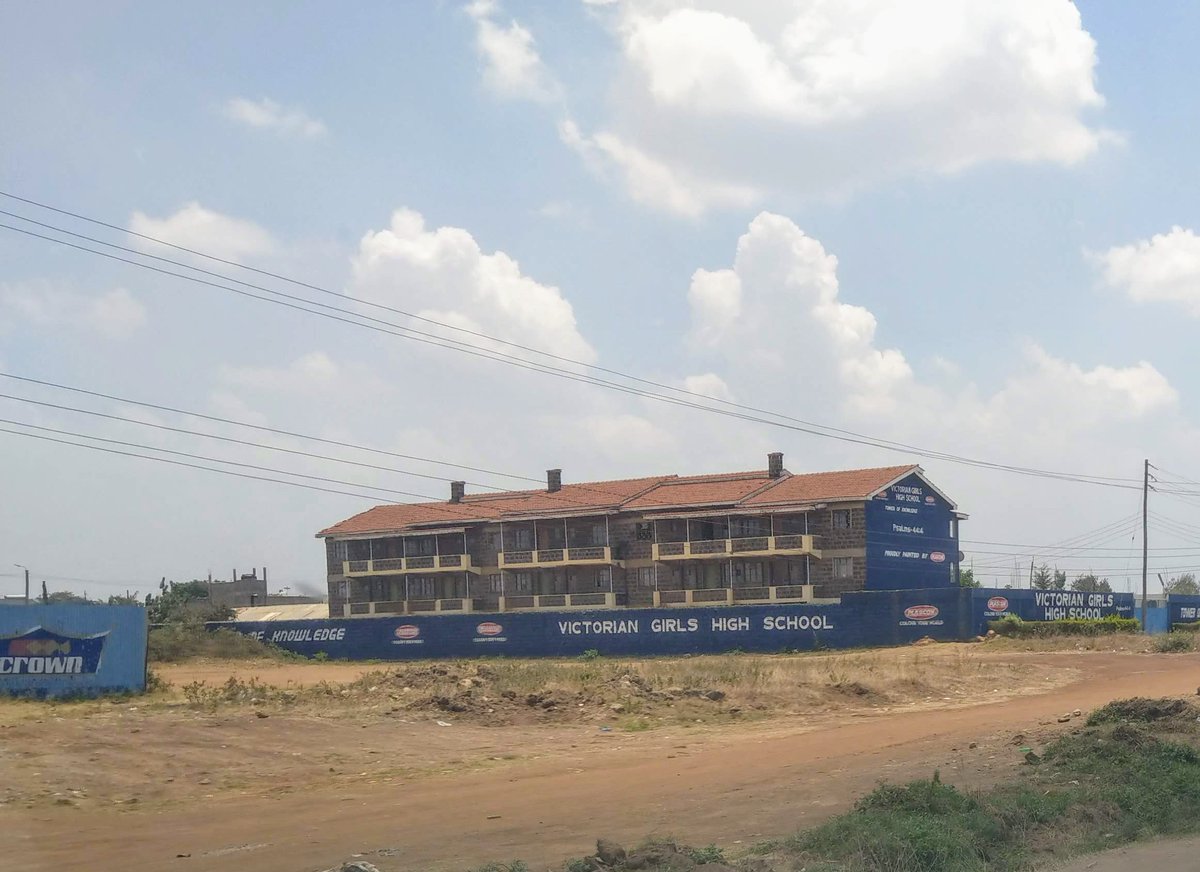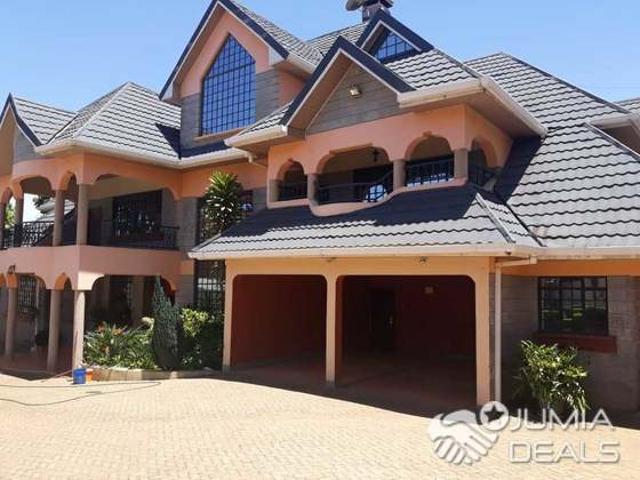The problem of style. This will be a long thread. https://twitter.com/dnahinga/status/1307192309814099968">https://twitter.com/dnahinga/...
I would never impose a style on anyone. Style is cliche& #39; at best. Four walls and a roof built to a certain design that has found favour with the masses. Style is what you find photographed in the magazines.
Why can we not have a uniform style on KE?
Why can we not have a uniform style on KE?
For starters, out climate is not uniform. Style would be regional. What is suitable for the coast is not suitable for Nairobi. The heat in Turkana is not the same as in Mombasa.
Some parts of Nairobi & Limuru, you would need a heated house like in the West for 3 months of the yr
Some parts of Nairobi & Limuru, you would need a heated house like in the West for 3 months of the yr
Add different cultures/tribes and we have a conundrum of how we should build. A Turkana uses his house differently to a Luo thou they are both Nilotes. A coast Bantu& #39;s needs are different to a highland Bantu. Add the Cushites and you see another layer of cultural complexity.
This is all based on looking at style from a traditional lens.
Our lecturers keep on hyping going back to our traditions and with the same breath reject modernism. Modernism is lumped together with colonialism I guess because most modernist structures were designed by mzungus.
Our lecturers keep on hyping going back to our traditions and with the same breath reject modernism. Modernism is lumped together with colonialism I guess because most modernist structures were designed by mzungus.
The rejection of colonialism is understandable but we have rejected all the lessons they learnt. We cannot deny our past.
Korea was ruled for ages by China and Japan. They took the best of both worlds to create their culture.
Korea was ruled for ages by China and Japan. They took the best of both worlds to create their culture.
Colonialism came with a lot of prejudice. We talk of Arab architecture at the coast but have you ever asked youself where Arabs learnt to build stone houses in the desert?
Have to take a break. Work is calling. Will write more later in the evening.
Can add a few lines while on my commute.
What we have in KE is a kind of identity crisis. We are a band of brothers thrown together by the colonialists. We are very tribal in our actions but we act like we see no tribe.
The first black Kenyans to study architecture in Kenya always complain about the racism they met.
The first black Kenyans to study architecture in Kenya always complain about the racism they met.
Many were told they couldn& #39;t study architecture because Africans didn& #39;t build permanent structures. Our building style doesn& #39;t fit into the modern world.
Now I have to explain what a style is. This is what I will continue with later today.
Now I have to explain what a style is. This is what I will continue with later today.
To think about Style, one has to look at Form, Idea, Type and Structure. Bear with me as all will come together at the end & I will try and simplify the explanations.
Style is the external form of the building.
Form is the shape of the building e.g Cylinder, Cube Pyramid etc.
Style is the external form of the building.
Form is the shape of the building e.g Cylinder, Cube Pyramid etc.
Form was the basis of design for buildings in antiquity and in our pre-colonial past. E.g. our traditional buildings and compounds were based on a circle floor plan. The Egyptians based their burial chambers on the pyramid form. A hut is considered as pure construction.
Form has three natures:
1. Structural or Functional
2. Sculptural or Ornamental
3. Geometric or Perceptual
The best model would balance all three.
A traditional hut is functional.
The Ndebele took it to step two with their painted huts. https://www.amusingplanet.com/2014/09/the-painted-houses-of-ndebeles.html">https://www.amusingplanet.com/2014/09/t...
1. Structural or Functional
2. Sculptural or Ornamental
3. Geometric or Perceptual
The best model would balance all three.
A traditional hut is functional.
The Ndebele took it to step two with their painted huts. https://www.amusingplanet.com/2014/09/the-painted-houses-of-ndebeles.html">https://www.amusingplanet.com/2014/09/t...
I have introduced a new word "model" which I have to explain through the word Type.
Type in architecture refers to the different uses e.g. School, Hospital, Office Building. Within each type, someone has come up with a unique solution and it becomes a reference model.
Type in architecture refers to the different uses e.g. School, Hospital, Office Building. Within each type, someone has come up with a unique solution and it becomes a reference model.
Architecture professors and lecturers know these models and are able to guide students in what to watch out for while designing.
In Kenya, for some reason, type and models are ignored?
For example, this picture is of a school that looks like an apartment building.
In Kenya, for some reason, type and models are ignored?
For example, this picture is of a school that looks like an apartment building.
The general model for modern architecture is considered to be the Greek temple. They balance the 3 natures mentioned above in artistic form.
Note that in different regions (Maya, Aztec, China, Japan, Egypt etc different styles developed that can be used as models.
Note that in different regions (Maya, Aztec, China, Japan, Egypt etc different styles developed that can be used as models.
During the Renaissance period, the notion of the Idea in Type and Form finding came about. This is about the image in your mind. Sometimes referred to as Gestalt.
You transfer the Gestalt to the Form or Type.
This was particularly useful during the Industrialisation stage where
You transfer the Gestalt to the Form or Type.
This was particularly useful during the Industrialisation stage where
there were no models to refer to. There had been no railway stations, petrol stations, drive in cinemas etc. These were all new Types with no existing models and had to be developed from scratch.
This brings me to Structure the term that has come to define the 20th century.
This brings me to Structure the term that has come to define the 20th century.
Structure started replacing type as form paradigm with the advent of computers. Computers can generate an infinite number of instances or variations of a form. Its called a patterned process. It has evolved to something called Generative Design which is at a more advanced level.
The ultimate goal is to eliminate the perceived Image, Idea or Type. It also eliminates the designer with all his/her images & preconceptions. Almost an anonymous design but unique since the form is not traditional but one of many computer generated iterations.
In Kenya, patterned design has evolved to an auto complete function in the design software. This is most visible on roofs.
Kikuyu Gothic is not the slum pictures of Pipeline but the many roofed houses of the neo-rich in Karen, Runda & Athi River.
Kikuyu Gothic is not the slum pictures of Pipeline but the many roofed houses of the neo-rich in Karen, Runda & Athi River.
Add to this the rejection of all things colonial & you realise that Kenyan architects are rejecting the Greek temple model and opting for the pure construction hut model.
The hut model unfortunately doesn& #39;t fit well in all modern types.
The hut model unfortunately doesn& #39;t fit well in all modern types.
You will then look at Kenyan architecture & say "It looks so bland" because it is structural and functional. Geometrically it is basic and literally like shaped to look like those ur-forms like a traditional stool, African drum etc http://www.aaki.co.ke/component/k2/item/113-proposed-kenya-national-library-services.html">https://www.aaki.co.ke/component...
I know many will think it is style that is required, but what we are missing are the archetypes/ prototypes & models that we can say are Kenyan.
African Heritage has been dangled around, but its is imported. We do not & did not build our houses that way. http://buildesign.co.ke/african-heritage-house/">https://buildesign.co.ke/african-h...
African Heritage has been dangled around, but its is imported. We do not & did not build our houses that way. http://buildesign.co.ke/african-heritage-house/">https://buildesign.co.ke/african-h...
Style became a thing at the beginning of the 20th Century when mass production was growing. Adolf Loos has a fascinating book called "Ornament and Crime" that deals with Style.
Style rolls over to become decoration used at the whims of a designer or client https://www.archdaily.com/798529/the-longish-read-ornament-and-crime-adolf-loos">https://www.archdaily.com/798529/th...
Style rolls over to become decoration used at the whims of a designer or client https://www.archdaily.com/798529/the-longish-read-ornament-and-crime-adolf-loos">https://www.archdaily.com/798529/th...
What we need to deal with is how to transform our traditional structures to modern ones.
We can be innovative in the use of materials and not be dogmatic about it being earthy or grassy. We imagine, build it and it is ours. https://docplayer.net/91792415-Con-text-transformation-of-kikuyu-traditional-architecture-case-study-of-homesteads-in-lower-mukurwe-ini-nyeri-kenya-joseph-w.html">https://docplayer.net/91792415-...
We can be innovative in the use of materials and not be dogmatic about it being earthy or grassy. We imagine, build it and it is ours. https://docplayer.net/91792415-Con-text-transformation-of-kikuyu-traditional-architecture-case-study-of-homesteads-in-lower-mukurwe-ini-nyeri-kenya-joseph-w.html">https://docplayer.net/91792415-...
I have had many students regurgitate what they have been taught in campus.
Glass is bad! Not suitable for our climate!
What they fail to understand is that air Conditioning IS a solution, just a bad one.
The rejection of colonial architecture is done with the same dogmatism.
Glass is bad! Not suitable for our climate!
What they fail to understand is that air Conditioning IS a solution, just a bad one.
The rejection of colonial architecture is done with the same dogmatism.
The architect Bowman, has a signature roof that he puts on his buildings. It is easy to understand & can be easily replicated. His signature could become a style. Frank Gehry has a signature where he folds the building like cloth or paper. His signature cannot be replicated.
The dialectic between the past and the present is key to us creating a Kenyan style in architecture. We must have a desire to understand the conditions of the present as a necessary step to create a genuine Kenyan style.
This would mean that we would have to give up the hyper functionalism & computer patterned processes and put more effort into Gestalt.
http://www.archidatum.com/projects/lost-villa-jonathan-woolf-architects/">https://www.archidatum.com/projects/...
http://www.archidatum.com/projects/lost-villa-jonathan-woolf-architects/">https://www.archidatum.com/projects/...

 Read on Twitter
Read on Twitter




